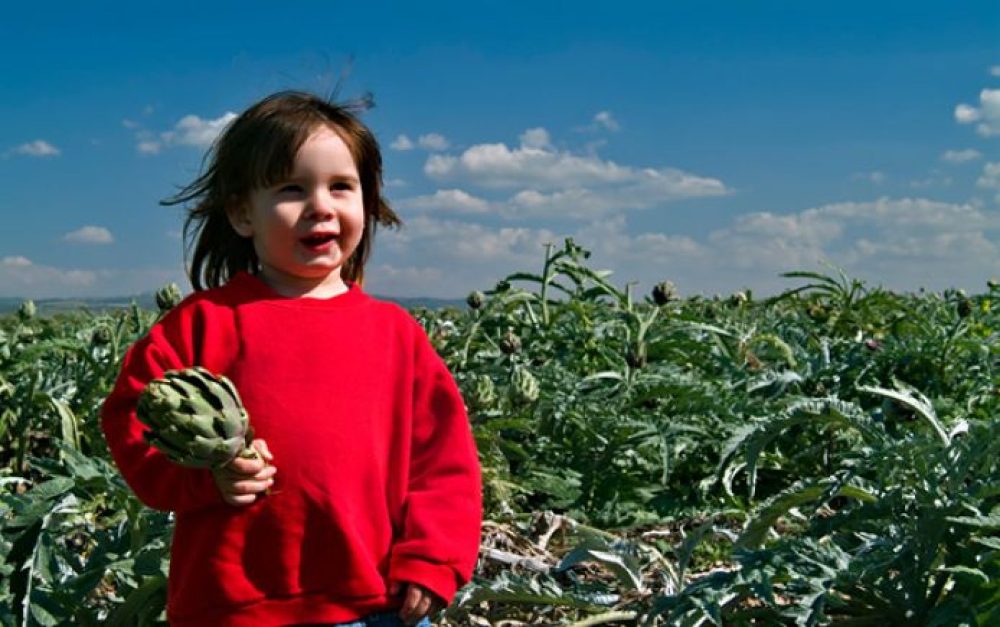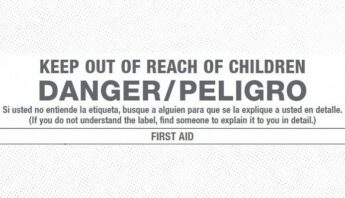"There's a perception that drift happens." That's what I heard an industry rep say when I listened in on a Kaua'i County Council meeting on pesticide issues last summer (before the landmark Bill 2491 passed). A perception of drift? Really?
If you've been following our work here at PAN you already know that pesticide drift is a problem. On-the-ground data from across the country leaves no question that drift happens — and that people in rural communities are being harmed. But did you know there's more than one kind? It's true. And right now, EPA is reviewing how to best assess the risks of the "other" kind of drift: volatilization.
To explain the difference, it's useful to go back to the basics. A pesticide applied to a field can really only get distributed to four places, or "compartments" in our environment — water, soil, living things and the air.
That last one — the air — is where pesticide drift first appears. This "spray drift" could result from applications aerially via plane, by a spray boom on a tractor, or via orchard airblast application. But when spray drift settles, it can move to the other three compartments.
For instance, spray drift from a pesticide application can blow some distance and land on surface water, polluting it. Volatilization drift, however, occurs when settled spray drift becomes vapor, rising from the surface of plants or from the soil. This can happen hours or days after the initial spraying.
The onion conundrum
Here's a useful analogy for volatilization drift. When you cut an onion, the juice from that onion is released into the air, and a sulfur-containing chemical makes your eyes tear up. You can't see it, you're not necessarily smelling it — but you can feel a physical effect. It's the same idea with volatilization drift.
Physical properties of the chemicals in pesticides (such as vapor pressure) dictate the likelihood of volatilization. High vapor pressure means higher levels of volatilization, which in turn means that the pesticide can disperse through the air over a large area.
After years of pressure, EPA is finally considering this "other" kind of drift.
Of the external factors impacting volatilization drift, wind is the most important. But factors such as temperature can also play a role. An increase in temperature will generally increase vapor pressure and rates of volatilization, resulting in more drift.
Former PAN scientist Dr. Susan Kegley, who invented the Drift Catcher, worked for years to bring the issue of volatilization drift to EPA's attention. In 2009, the agency finally began to consider volatilization drift for certain pesticides — which was a start. Now they're developing methods for evaluating the health impacts of volatilization drift more broadly.
Rural communities bear the brunt
Back to my Hawai'i story. I had a fairly explosive reaction when I heard the industry statement about "perception of drift," especially given the known drift harms on Kaua'i. In 2006, a drift incident caused more than 60 children to fall ill at Waimea Canyon Middle School after a pesticide application on a Syngenta-owned field directly adjacent to the school.
More incidents have occurred at schools on Kaua'i, where genetically engineered test fields, schools, and residences lay in close proximity to each other. Progress has been made, as Kaua'i is now one of the few places in the U.S. with pesticide use reporting.
And we know pesticide drift is a very real problem across the country.
A 2011 study relying on state and national records reported drift incidents in at least 11 states. Of the cases analyzed from 1998-2006, 47% were exposed at work, 92% experienced low-severity illness, and 14% were children under 15 years of age. Some pesticides, such as fumigants, are by nature in a gaseous state and are naturally prone to volatilization drift.
Where pesticide applications occur, there will be drift incidents.
Where pesticide applications occur, there will be drift incidents. A recent California Department of Public Health report on pesticide usage near schools reported that more than 500,000 California children in hundreds of rural schools spend their days within 1/4 mile of pesticide applications. Is this an acceptable situation for children — or anyone else — to be facing?
PAN has worked for years to document both kinds of drift with community partners across the country. In 2013, community partners Bonnie and Andrew Wirtz of Melrose, Minnesota used the Drift Catcher to document volatilization drift occurring at levels approximately four times EPA's "safe" exposure level for a 1-year old child.
The year before, Bonnie had experienced a serious drift exposure incident from an aerial application of chlorpyrifos, nearly going into cardiac arrest. Their 2-year old son, Jayden, was home during both of these pesticide applications. Bonnie's biggest concern is that her son will "continue being exposed and have long-term adverse effects from the spray."
"The label is the law"
EPA's pesticide regulations are implemented via labels. A pesticide label specifies many things, among them: the rate at which the product is applied, appropriate weather conditions and what protective gear is needed.
Just to spell it out, there are no EPA cops standing at the edges of fields, making sure applicators are following the label to the letter. Yet even when pesticides are applied according to the label, drift can occur.
Even when pesticides are applied according to the label, drift can occur.
For instance, the label for Lorsban 4E, which contains the active ingredient and neurotoxicant chlorpyrifos, addresses spray drift management — but not volatilization drift.
EPA needs to do better. Testimony from three of our community partners was presented in PAN's comments to the agency on spray drift, asking for immediate action. We also submitted more than 5,000 signatures from supporters across the country.
An EPA docket on volatilization drift is now open until July 11th. If you want to take action after reading this blog, you can let EPA know your stance on this important issue by signing onto our citizen petition, here.








